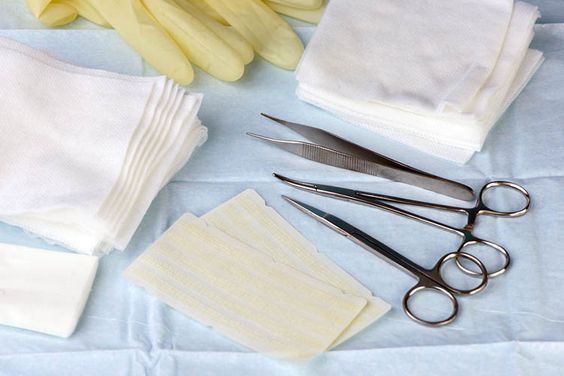Postoperative wound suppuration is a common complication that not only increases the patient's pain, but may also to the spread of infection, prolong recovery time, and even require another surgery. Therefore, timely and effective treatment of postoperative wound suppuration is crucial. As a new type of wound care material, silicone gel foam dressing has shown significant advantages in treating postoperative wound suppuration due to its unique physical and biological properties.

The reason for pus discharge from wounds after surgery?
Purulence from postoperative wounds is usually caused by infection, which may be caused by a variety of factors, including surgical instruments, the operating room environment, or surgical personnel who may become the source of infection. Once a wound appears, many bacteria will come in. If the fierce "battle" between the body's immune cells and bacteria fails, and bacteria such as Streptococcus pyogenes successfully invade the wound, it will to increased inflammatory exudation and suppuration, which is generally a gray-yellow or yellow-white thick liquid. Pus will affect wound healing and make the wound more likely to leave scars, so purulent wounds must be handled well. Improper wound care may to bacterial growth. Foreign objects left over during surgery may cause local infection.
Which wound dressing should be used to care for wounds with exudate?
It is recommended to use silicone gel foam dressing, which is a composite material composed of silicone gel and polyurethane foam. It can absorb wound exudate, reduce the humidity around the wound, and create an environment that is not conducive to bacterial growth. The dressing allows oxygen to pass through, which helps wound healing. It can also protect the wound to form a physical barrier to prevent the invasion of external bacteria.

How to properly care for wounds after surgery?
1. Wound cleaning: First, use saline solution to clean the wound and remove pus.
2. Dressing change: The wound is then covered with a silicone gel foam dressing and changed daily.
3. Antibiotic treatment: Appropriate antibiotic treatment is given at the same time to control the infection.
4. Monitor progress: Regularly monitor wound healing and infection indicators.
Postoperative wound suppuration is a serious complication that requires timely and effective treatment. Silicone gel foam dressings have shown significant advantages in treating postoperative wound suppuration due to their unique physical and biological properties. Through correct use and regular monitoring, silicone gel foam dressings can effectively control infection, promote wound healing, and improve the patient's quality of life. However, the specific situation of each patient is different, so when using silicone gel foam dressings, you should follow the doctor's advice and guidance.
For more information on Innomed® Hydrogel Dressing, Refer to the Previous Articles. If you have customized needs, you are welcome to contact us; You Wholeheartedly. At longterm medical, we transform this data by Innovating and Developing Products that Make Life easier for those who need loving care.
Editor: kiki Jia

 English
English عربى
عربى Español
Español русский
русский 中文简体
中文简体








